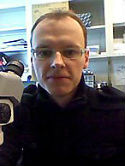| Abstract: |
After a cell has segregated sister chromatids in mitosis, the central part of the mitotic spindle differentiates into a specialized organelle, the midbody, lying in the center of the intercellular bridge that connects the two daughter cells. In the concluding step of cytokinesis, membrane insertion seals the cytoplasmic channel resulting in the physical separation of the daughters. A circular protein-dense structure at the midbody's focus, called Flemming body or midbody ring (MR), is considered to be the integrating platform for the following: The accumulation and remodeling of membranes, the ubiquitination of several of its constituents, the segregation of signaling components, and the sequestration of fate-determining factors. We recently demonstrated that MRs, after they become ubiquitinated, are found inside autophagosomes and finally deteriorate when these autophagosomes mature into lysosomes. Strikingly, p62/SQSTM1, an adaptor protein that delivers ubiquitinated proteins for autophagosomal degradation, is recruited to the MR at the time of its ubiquitination and is required for its efficient degradation. Furthermore, downregulating autophagy or lysosomal degradation showed marked accumulation of MRs, suggesting that clearing of MRs by autophagy represents a process directly coupled to cytokinesis. Considering our own recent findings and several reports from other labs, we suggest a sequential model of late stages of cytokinesis that includes (a) the formation of a binding surface by ubiquitination of MR components, (b) recruitment of ESCRT complexes for membrane remodeling and (c) handover of the membrane-enveloped MR either to autophagosomal degradation or exocytosis. ©2009 Landes Bioscience. |



